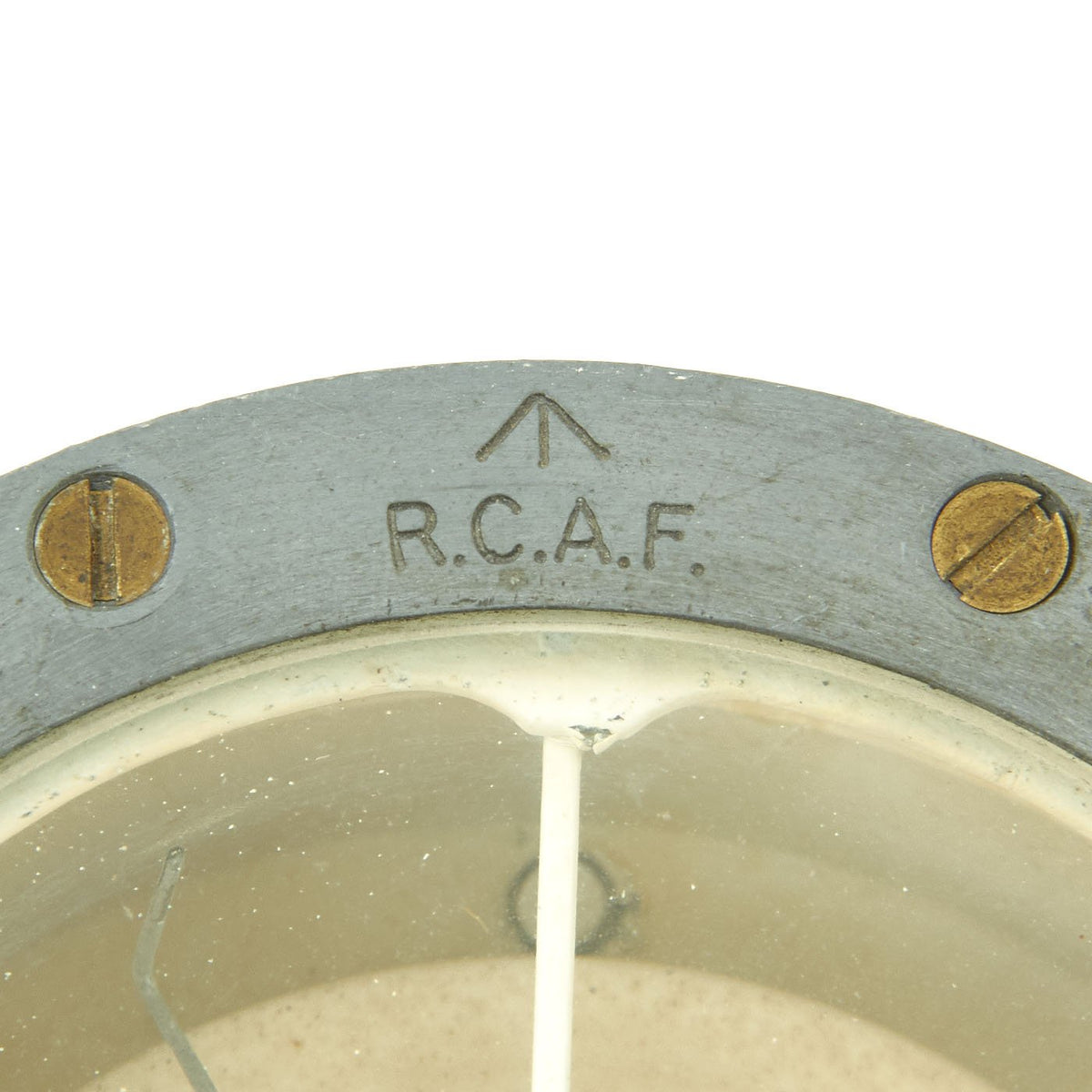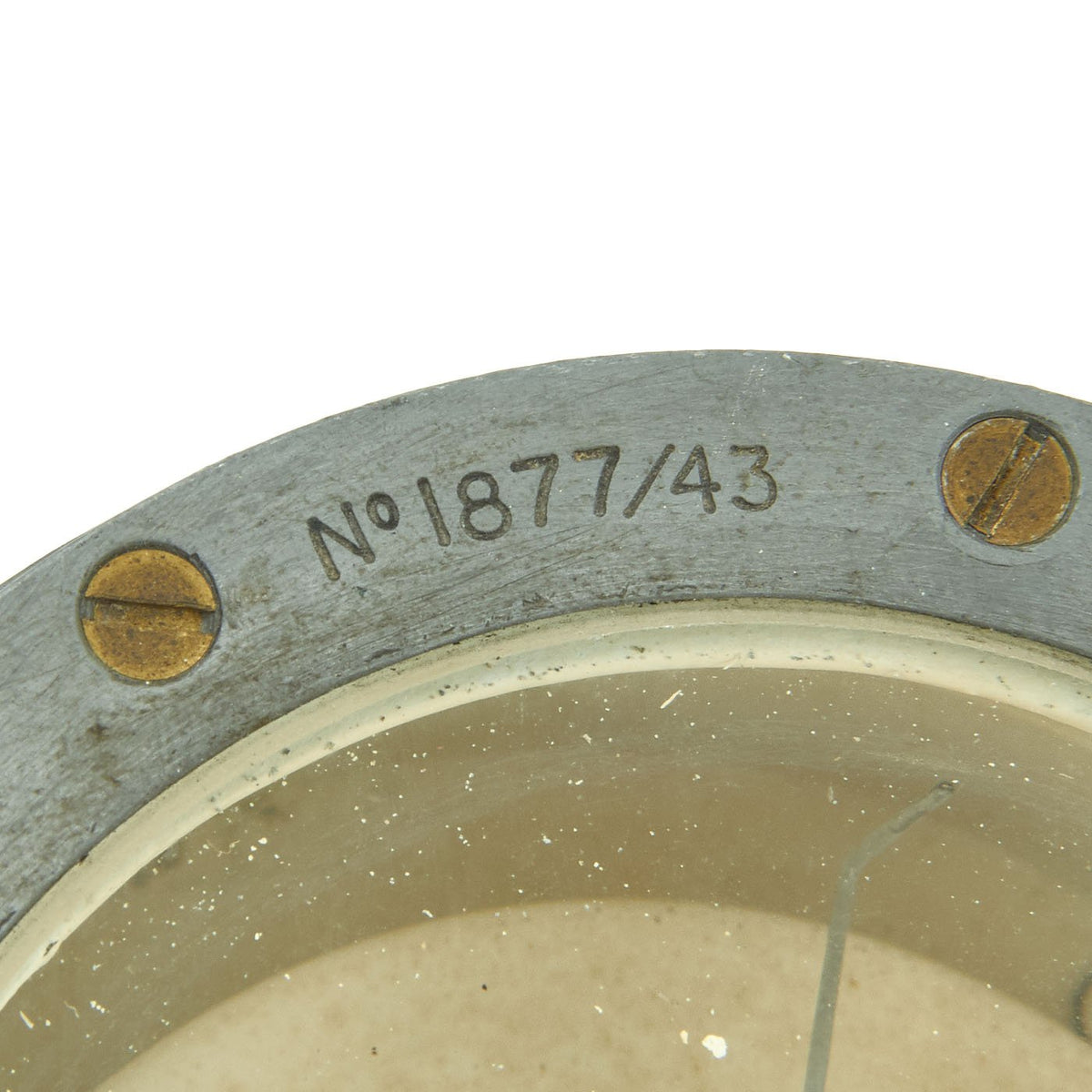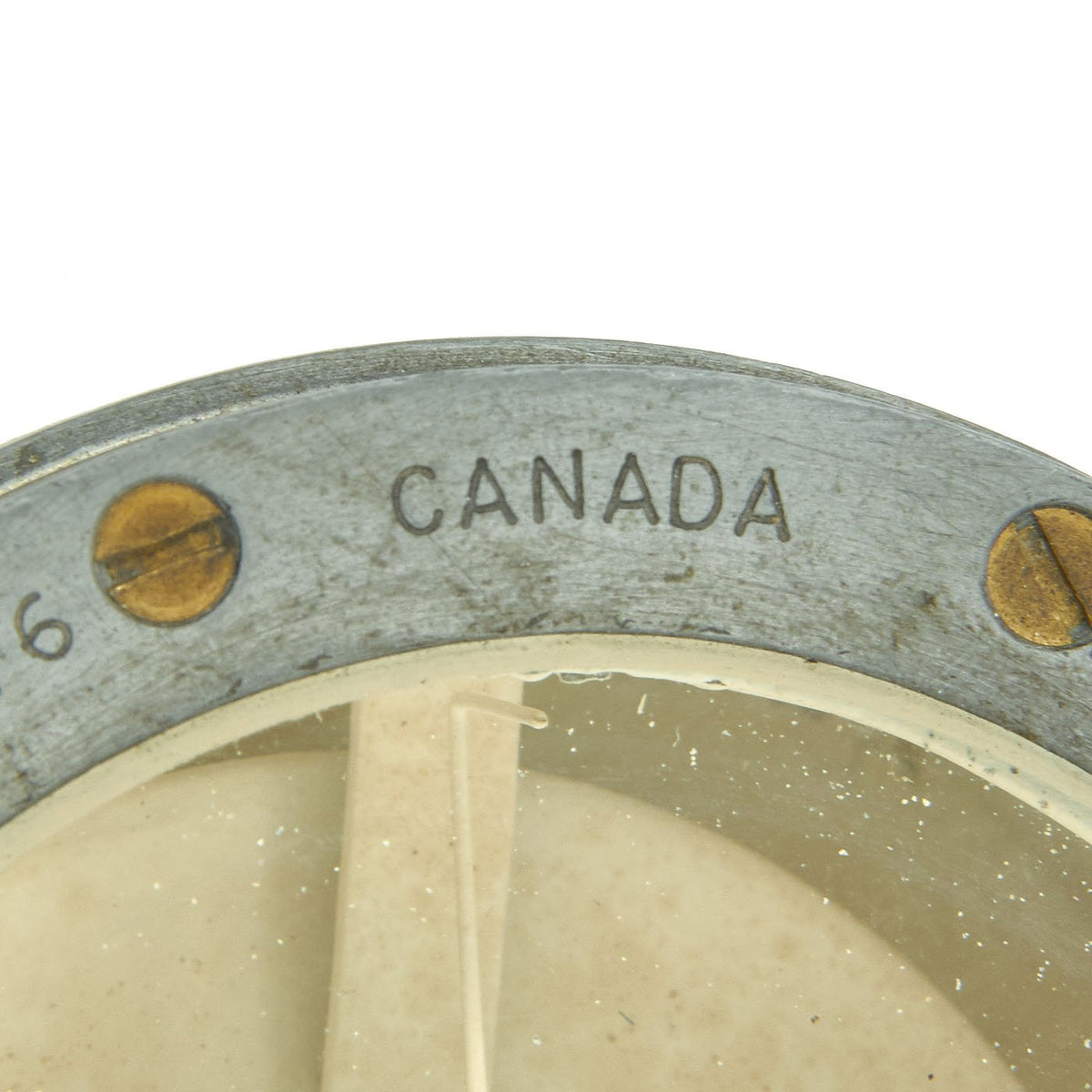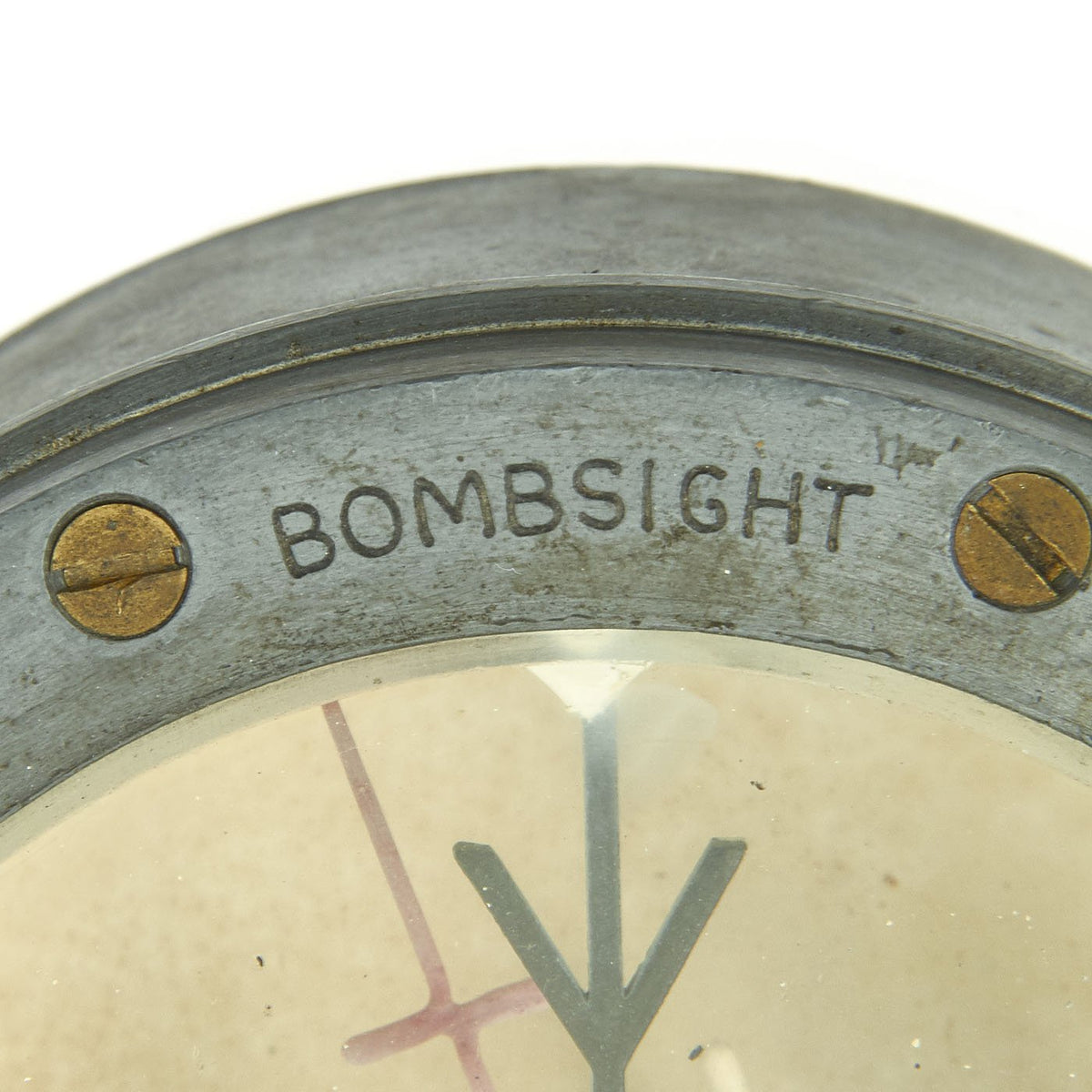Original British WWII Royal Canadian Air Force RCAF Compass for Course Setting Bomb Sight – dated 1943 Original Items
$ 150,00 $ 60,00
Original Item: Only One Available. The British Course Setting Bomb Sight (CSBS) is the canonical vector bombsight, the first practical system for properly accounting for the effects of wind when dropping bombs. It is also widely referred to as the Wimperis sight after its inventor, Harry Wimperis, who started work on the sight in 1916. The idea was to put as many of the manual calculations required for aiming into an easy to use device. During the years between WWI and WWII, the design was updated many times, and by 1941 it was in the 9th revision.
However, one things that always remained constant was the large compass at one end, and that is what we offer here. This is an excellent condition Royal Canadian Air Force (R.C.A.F.) marked compass REF 6E/0.276, for use with the Course Setting Bombsight in use by Canadian and British forces. This is why it is marked BOMBSIGHT on the bezel around the top, when it is obviously not a bombsight.
Other markings of interest include the serial number No 1877/43, indicating 1943 manufacture. It is also marked by the maker ONTARIO HUGHES OWENS / CO. LTD..
Condition is very good, though the interior has had some flaking of the white paint. These were originally filled with alcohol and water, and over time that could degrade the interior finish.
RCAF material from WWII is extremely difficult to find especially in such good condition with original Canadian markings. Ready to display!
The Canadian Air Force (CAF) was established in 1920 as the successor to a short-lived two-squadron Canadian Air Force that was formed during the First World War in Europe. John Scott Williams, MC, AFC, was tasked in 1921 with organizing the CAF, handing command over later the same year to Air Marshal Lindsay Gordon. The new Canadian Air Force was a branch of the Air Board and was chiefly a training militia that provided refresher training to veteran pilots. Many CAF members also worked with the Air Board’s Civil Operations Branch on operations that included forestry, surveying and anti-smuggling patrols. In 1923, the CAF became responsible for all flying operations in Canada, including civil aviation. In 1924, the Canadian Air Force, was granted the royal title, becoming the Royal Canadian Air Force (RCAF). Most of its work was civil in nature; however, in the late 1920s the RCAF evolved into more of a military organization. After budget cuts in the early 1930s, the air force began to rebuild.
During the Second World War, the RCAF was a major contributor to the British Commonwealth Air Training Plan and was involved in operations in Great Britain, Europe, the north Atlantic, North Africa, southern Asia, and with home defence. By the end of the war, the RCAF had become the fourth largest allied air force. During WWII the Royal Canadian Air Force was headquartered in 20-23 Lincolns Inn Fields, London. A commemorative plaque can be found on the outside of the building.
Fast Shipping with Professional Packaging
Thanks to our longstanding association with UPS FedEx DHL, and other major international carriers, we are able to provide a range of shipping options. Our warehouse staff is expertly trained and will wrap your products according to our exact and precise specifications. Prior to shipping, your goods will be thoroughly examined and securely secured. We ship to thousands clients each day across multiple countries. This shows how we're dedicated to be the largest retailer on the internet. Warehouses and distribution centres can be located throughout Europe as well as the USA.
Note: Orders with more than one item will be assigned a processing date depending on the item.
Before shipping before shipping, we'll conduct a thorough inspection of the items you have ordered. Today, the majority of orders will be delivered within 48 hours. The delivery time will be between 3-7 days.
Returns
The stock is dynamic and we cannot completely manage it because multiple stakeholders are involved, including our factory and warehouse. So the actual stock may alter at any time. It's possible that you may not receive your order once the order has been made.
Our policy is valid for a period of 30 days. If you don't receive the product within 30 days, we are not able to issue a refund or an exchange.
You can only return an item if it is unused and in the same state as the day you received it. You must have the item in its original packaging.
Related products
Uncategorized
Uncategorized
Uncategorized
Uncategorized
Uncategorized
Uncategorized
Uncategorized
Uncategorized
Uncategorized
Uncategorized
Armored Burgonet Helmet & Polearm from Scottish Castle Leith Hall Circa 1700 Original Items
Uncategorized
Australian WWII Owen MK1 Machine Carbine SMG Custom Fabricated Replica with Sling Original Items
Uncategorized
Uncategorized
Uncategorized
Uncategorized
Uncategorized
Uncategorized
Uncategorized
Uncategorized
Armoured Fighting Vehicles of the World: AFVs of World War One (Hardcover Book) New Made Items












































































